Lidia Thorpe screams ‘this is WAR’ at Australia Day protest
>
Dramatic scenes have broken out at Invasion Day demonstrations across the country, with Green senator and indigenous rights activist Lidia Thorpe declaring “this is war” to a packed crowd.
Protesters have taken to the streets in organized marches in every state and territory on Thursday as many choose not to mark the national holiday and protest on January 26 as Australia’s national day of celebration.
In Melbourne, Green senator Lidia Thorpe took the stage at Victoria’s Parliament around midday as the crowd cheered in the blistering heat.
Ms Thorpe, who is an indigenous woman and the star of the Melbourne treaty movement, declared war, in the latest example of overheated rhetoric.
“(It was) a war that was declared on our people over 200 years ago,” Senator Thorpe said in an extraordinary speech, saying that “they” continued to rape black women.
Loud cries of “shame” were met by consecutive statements from Ms Thorpe, her hands painted red symbolizing violence and in which she held a “war stick”.
The rally in Sydney was countered by pro-Australia Day protesters, carrying banners reading “Support Australia Day”, who quickly moved away from the Invasion Day protesters.
Lidia Thorpe brandished a ‘battle stick’ as she addressed a crowd on the steps of Victoria’s Parliament.
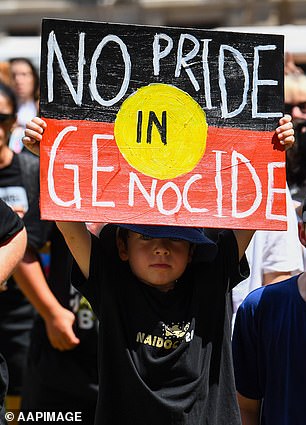
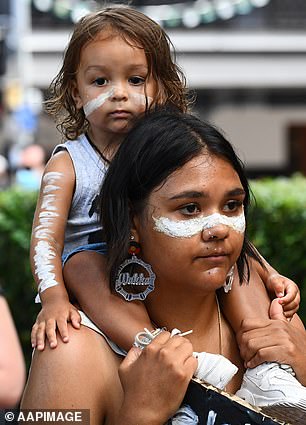
Protesters took to the streets in every state and territory to protest against Australia’s January 26 national holiday (pictured)
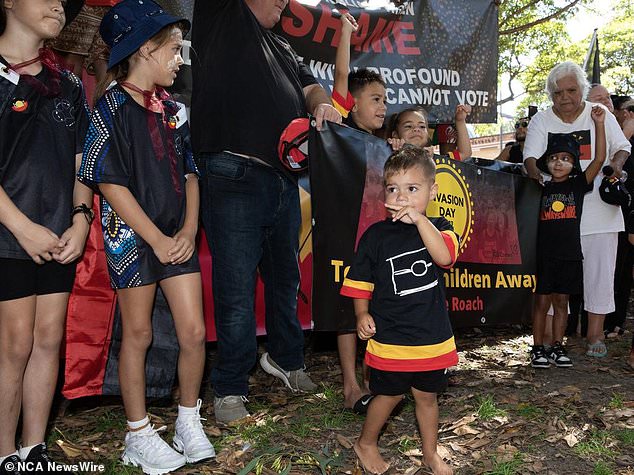
Crowds gather at Belmore Park in Sydney’s CBD for the annual Invasion Day protests
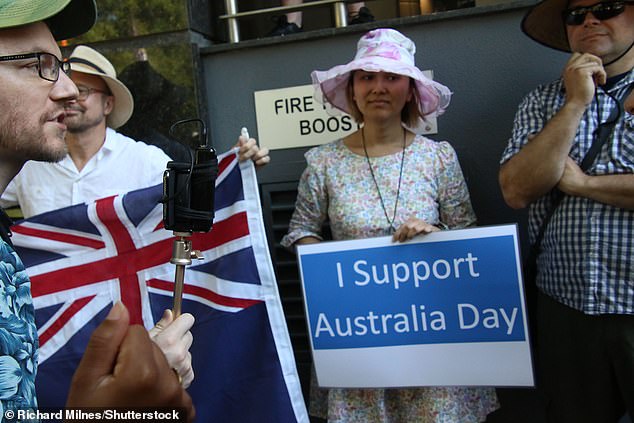
Counter-protesters in support of Australia Day stood outside the Invasion Day rally with the Australian flag and banners (pictured)
The police also intervened and asked the group to disperse and said they would be given an address if they did not comply with the request.
Speakers in Sydney called for indigenous sovereignty and criticized the Indigenous Voice referendum in Parliament.
Activist and Dunghutti, Gumbaynggirr, Bundjalung woman, Aunt Lizzie Jarrett told attendees to vote no.
“Liberal, Labour, the system is not for black people,” he said as the crowd cheered in response.
‘We don’t want a voice, we have a voice. We don’t want a white wash.
‘When the time comes. Vote ‘no’ on the referendum. Don’t come here and check a box.
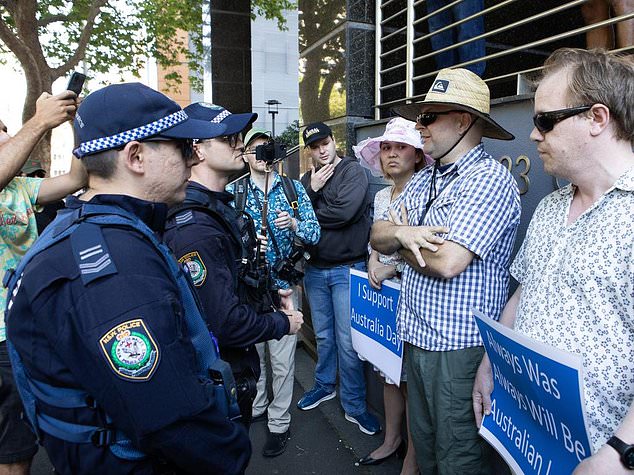
Police quickly moved counter-protesters (pictured)
Ms Jarrett also told the NSW Police officers gathered at the rally that they did not need her protection.
The activist called Australia Day “dead” and compared it to the recent passing of Queen Elizabeth II.
We protect each other. This is sovereignty day, Australia Day is dead,” said Ms Jarrett.
‘Like Queen Lizzie, Australia Day is dead with her. Will you support us? If she does, when the referendum comes, throw it in the ground like Australia.
Green MP Mehreen Faruqi is present at the march and posted footage of the smoking ceremony on Twitter.
“Today I join the people of the First Nations in marking January 26 as Invasion Day, as I have done for many years. It is a day of mourning,” Ms. Faruqi wrote.
‘We are asking for justice for First Nations and we are asking for a Treaty in this country.’
Green NSW upper house candidate and Wiradjuri woman Linda June Coe called Indigenous Voice in Parliament a ‘fallacy’.
She told the crowd at Belmore Park that the Invasion Day rally was a day of reckoning for White Australia.
“White Australia, this is the reckoning: 235 years and we’re not going anywhere,” he said.
‘They tried to kill us, still here. They tried to raise us, still here. They tried to commit genocide against us, still here!
‘Brisbane, Melbourne, we are all mobilizing against the fallacy of constitutional recognition. My people, this is the voice.
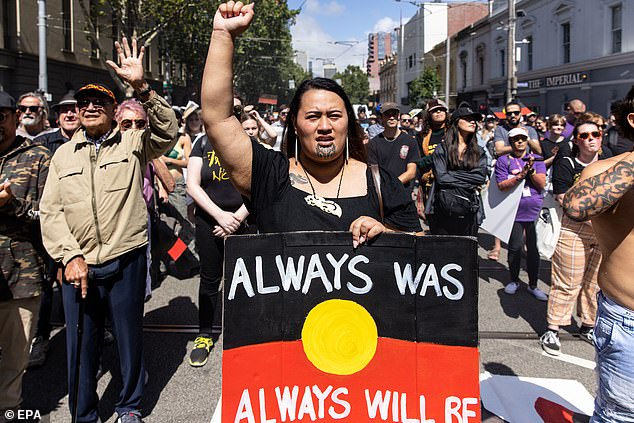
A protester carries a banner displaying the Aboriginal flag during an Invasion Day rally in Sydney.
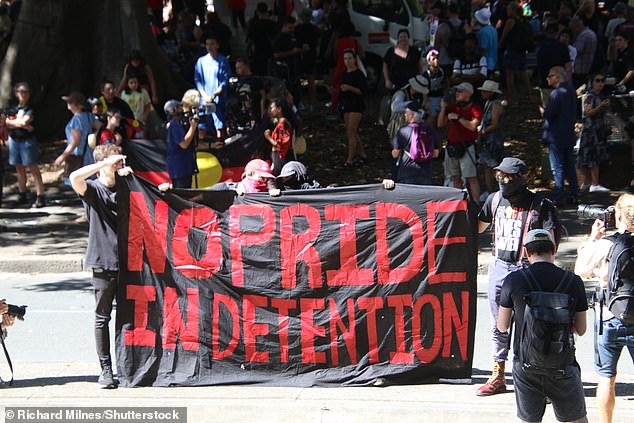
Protesters marching from Belmore Park to the Yabun Festival in Victoria Park, Camperdown (pictured)
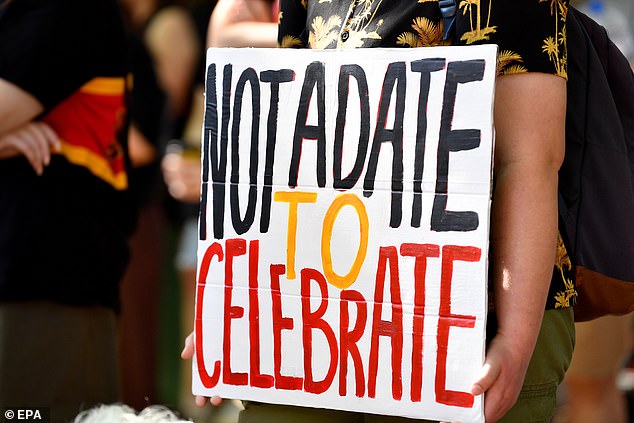
Australia Day is celebrated on January 26, marking the arrival of the First Fleet in Australia, marking the colonization of the country’s Aboriginal people.
Indigenous anti-mining activist Adrian Burragubba called the government voice’s plan patronizing and a form of assimilation.
“This is like a paternalistic attitude, all the time, of telling us, ‘We know what’s best for you and we’ll tell you what’s right,'” he said.
‘We don’t want to be assimilated into a constitution written by white people.’
Hundreds of people endured temperatures of 27°C wearing clothing with the aboriginal flag.
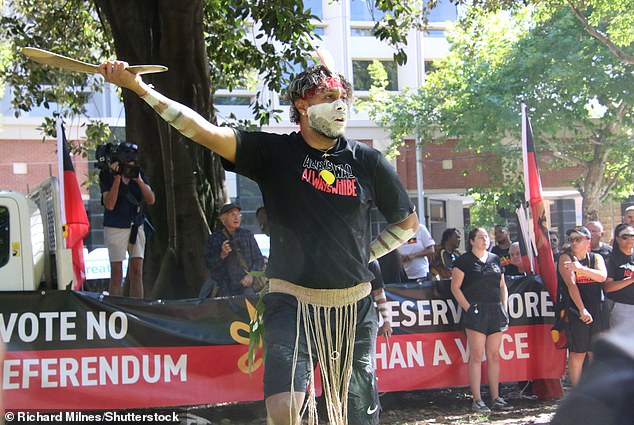
The theme of the Sydney rally is “sovereignty before voice” in response to the Federal Government’s proposed Voice in Parliament.
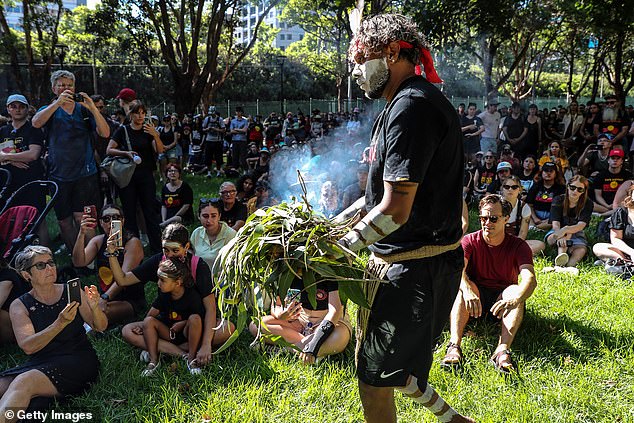
The rally opened with a smoking ceremony, followed by traditional dancing (pictured) and a recognition of the country by Uncle Dave Bell.
The signs read “we deserve more than a voice” and “vote no to the referendum.”
The sails of the Sydney Opera House were lit with indigenous artwork by proud Kamilaroi woman and artist, Rhonda Sampson, to celebrate First Nations women around the water of Sydney Harbour.
Ahead of the protest, hundreds gathered in Barangaroo for the morning WugulOra ceremony to honor First Nations people and reflect on what the day means to them.
An ancient smoking ceremony was held to “clear the way for new beginnings” and to celebrate the world’s oldest living culture through dance, music and language.
Attendees witnessed special performances by Aboriginal dancers and singers from the Torres Strait Islands, including the Koomurri Aboriginal dance troupe.
A march also started in Canberra at Garema Place, with hundreds of people gathering in the sunshine at 9:30am.
A sign hanging in the park reads “Self Determination, No Incarceration.”
Meanwhile, there was no city-wide Australia Day parade for the third year in a row, as thousands of people poured into the streets in solidarity with First Nations people.
The huge crowd gathered in front of the Victorian State Parliament on Bourke Street in the city’s CBD for the annual Invasion Day celebration.
The crowd, which numbered in the thousands, erupted in cheers as a speaker declared ‘f**k Australia Day’.
Uncle Gary Foley was the first speaker at the rally, he blasted The Voice’s proposal before parliament labeling it ‘lipstick on a pig’.
In Cairns, protesters began marching from Fogarty Park at 9am and walked through the city holding a banner reading “Abolition Australia Day”.
The crowd could be heard chanting: ‘What do we want? Treaty. When do we want it? Now’.
Protests are planned across all states and territories, with Brisbane starting at 10am from Queens Gardens, Hobart starting at 10:45am, Darwin starting at 10:30am, Adelaide starting at noon, Perth from 12pm and Melbourne at 11am from Victoria Parliament House.
Non-indigenous Australians have been celebrating what is known as ‘Australia Day’ for 29 years.
The day is historic and has deep cultural significance to Indigenous Australians and is an opportunity to advocate for Aboriginal and Torres Strait Islander deaths in custody.
